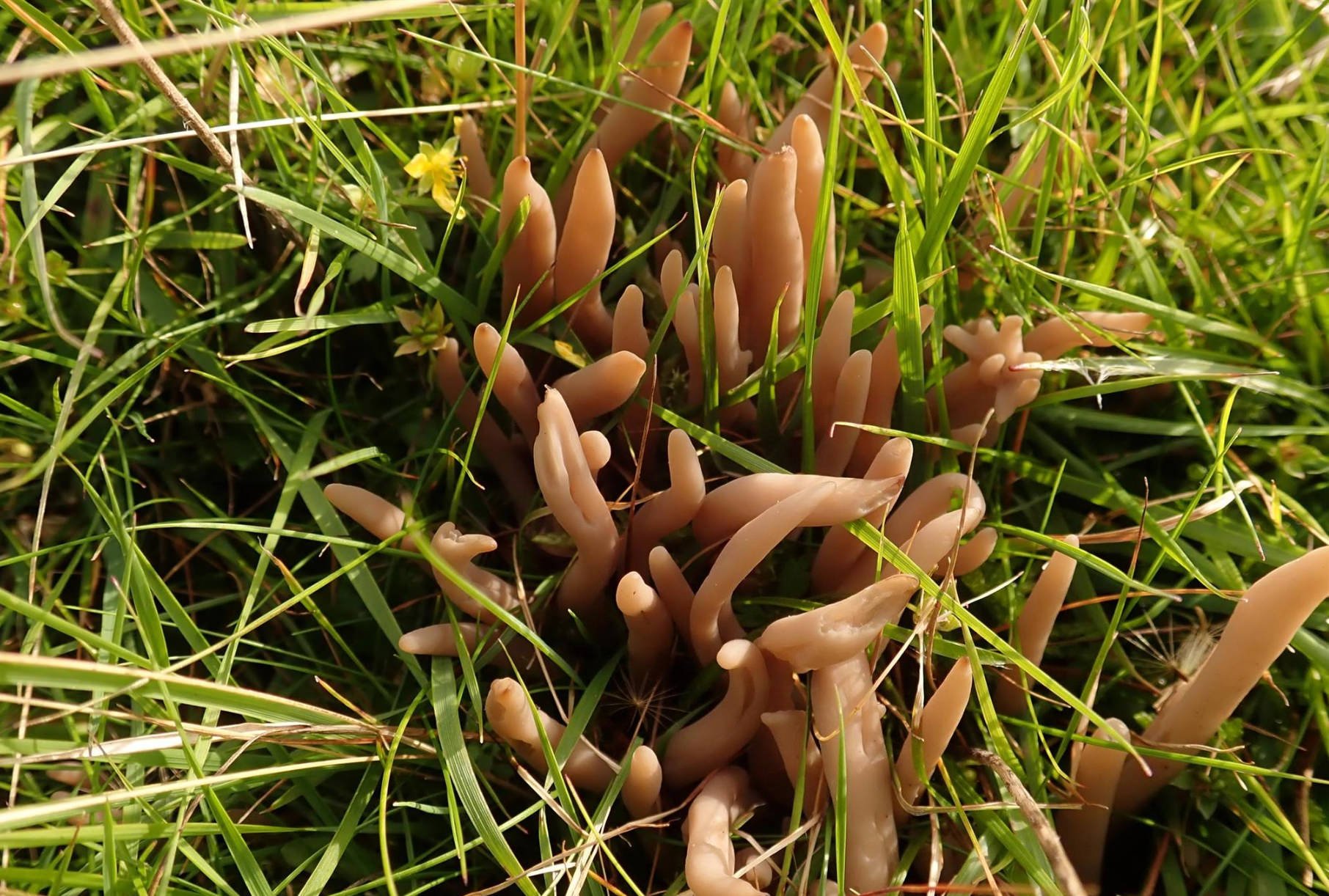Nature Tripping Episode 28 - Grassland Fungi
Jo and Cathy spend this episode with National Trust project officer and ecologist Steve Hindle on the slopes of Calderdale, in what looks like an ordinary field… but isn’t. They discuss the fascinating lives of fungi and their vital but often overlooked role in the ecosystem, not only as decomposers or parasites, but also as symbiotic partners engaged in a range of very sophisticated relationships with plants. Steve’s partner Sarah Flood scours the field for waxcaps, pinkgills, clubs, corals and earthtongues. Each has their own ecological niche, and all are indicators of ‘ancient grassland’, a rare habitat which Calderdale, with its challenging farming conditions, has managed to hold on to. Landowner Liz tells of the sometimes confusing journey her and her partner took to work out the best management options for the field, the steps they are taking to protect it, and of course, her new found passion for fungi!
There is a community of fungi which are largely only found in semi-natural, mycologically-rich unimproved ancient grasslands. Because of this they are good indicators of the presence of this habitat, i.e. - if you find enough of them in a field it could be that you are in an ancient grassland. They are collectively referred to as CHEGD species, with each of the letters standing for a group of related fungi as follows:
C is for the Clavariaceae or Fairy Clubs, Spindles and Corals
H is for the Hygrocybe or Waxcaps
E is for the Entoloma or Pinkgills
G is for the Geoglossaceae or Earthtongues
D is for the Dermoloma or Crazed Caps and includes a few other species
Of the five groups, the best known and recorded are the colourful Waxcaps. For this reason, good sites have come to be known as Waxcap Grasslands. Natural England has recently qualified a Waxcap Grassland as a site supporting at least ten CHEGD species.
Steve’s waxcap identification app is currently available for android users, with an iPhone version on its way:
Fungi mentioned in the podcast (photos by Steve) :
Two parasitic fungi - the Scarlet Caterpillar Club, and Powder Cap Strangler:
Waxcap fungi: From left to right - meadow waxcap, honey waxcap, butter waxcap, scarlet waxcap.
From left to right - blackening waxcap, lilac pink gill, smokey spindles, earth tongue.










